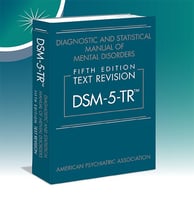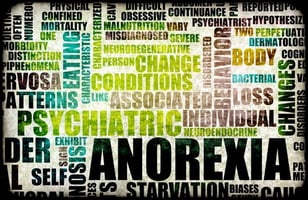Researchers Outline DSM-5-TR Changes, Rationale Behind Changes

When DSM-5-TR was released last March, it marked the first revised edition since the publication of DSM-5 in 2013. In an article in Psychiatric Services, Michael B. First, M.D., of Columbia University and colleagues provide an overview of notable changes in DSM-5-TR, the rationale for these changes, and the process by which these changes were made.
First is co-chair of the Revision Subcommittee and DSM-5-TR editor, a member of the DSM Steering Committee, and the chief technical and editorial consultant on the World Health Organization’s ICD-11 revision project. Other authors of the article include researchers from APA, Johns Hopkins, and the New York State Psychiatric Institute.
The authors first describe the process used to revise and update DSM, including the review of the 21 disorder chapters by content experts and vetting the entire text by the Ethnoracial Equity and Inclusion Work Group to ensure appropriate attention to risk factors such as the experience of racism and discrimination. The authors then provide an overview of the significant changes in DSM-5-TR:
- Addition of diagnostic entities: Diagnostic entities that are new to DSM-5-TR include prolonged grief disorder, unspecified mood disorder, and stimulant-induced mild neurocognitive disorder, as well as a code for “no diagnosis or condition” and symptom codes to indicate suicidal behavior and nonsuicidal self-injury.
- Changes to criteria sets: Modifications and clarifications were made to the criteria sets for more than 70 disorders, primarily for clarification of ambiguous wording and inconsistencies. A comprehensive list of significant changes to the criteria sets can be found here.
- Updated terminology: Several disorders (for example, social anxiety disorder and persistent depressive disorder) were renamed. Terms used in the DSM-5 gender dysphoria text were updated (for example, the terms natal male, natal female, and natal gender have been replaced by, respectively, assigned male at birth, assigned female at birth, and assigned gender at birth; desired gender has been replaced by experienced gender; and the terms cross-sex medical procedure and cross-sex hormone treatment have been replaced by, respectively, gender-affirming medical procedure and gender-affirming hormone treatment.
“With continued advances in the field, the DSM will continue to be updated to provide clinicians and researchers with the most accurate information for diagnosing patients’ conditions and conducting research,” First and colleagues state. “Maintaining the utility of the DSM as the prime diagnostic reference for psychiatry remains the overriding goal.”
For related information, see the Psychiatric News articles “Impact of Culture, Race, Social Determinants Reflected Throughout New DSM-5-TR” and “Updated DSM-5 Text Revisions to Be Released in March.”
Don't miss out! To learn about newly posted articles in Psychiatric News, please sign up here.






